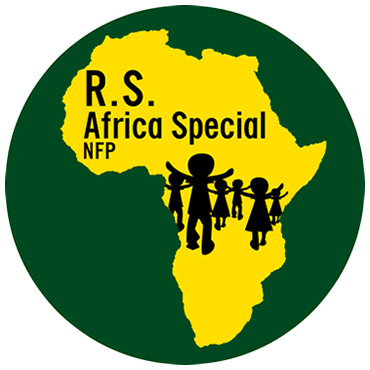 R.S. AFRICA SPECIAL NFP
R.S. AFRICA SPECIAL NFP  R.S. AFRICA SPECIAL NFP
R.S. AFRICA SPECIAL NFP
Welcome to RSAFRICASPECIAL.org
Ethiopia Demography
Ethiopia is an ancient African country that has never been colonized by the West except for a brief invasion by the Italians from 1936 to 1941. It is a developing country located in the Eastern horn of Africa with a population of 113 million and a population growth rate of 2.7%.1 It has a GDP per capita of $2,300 and a GDP growth rate of 10.9%.2 More than 70% of the Ethiopian population is engaged in Agriculture, though the service sectors have surpassed agriculture as the main source of GDP.2 Agriculture is the core of the economy and major exports include coffee, oil seeds, pulses, sugar, vegetables, zinc, gold, sesame, khat, livestock, horticulture products, and animal hides.3 There are over 83 different languages with 200 dialects spoken at different parts of the country. According to Ethiopian Central Statistical Authority (CSA) 2007 census report, 59.1% are Orthodox Christians, 25.9% are Muslims, 13.5% are Protestants, and the rest are other including non-religious.4 The largest first languages of Ethiopia are, Oromo, Amharic, Somali, Tigrinya, Sidama, Wolaytta, Sebat Bet Gurage, and Afar.5 Amharic is the government's official working language.
Ethiopian Orthodox 43.8%, Muslim 31.3%, Protestant 22.8%, Catholic 0.7%, traditional 0.6%, other 0.8%
EDUCATION: Ethiopian Ministry of Education
Early Childhood Care and Education
The Ethiopian Ministry of Education (MoE) has a three-prong-modules approach that helps to jump start the educational success of pre-school children.
a) Kindergarten (3 years): This curriculum is run by nongovernmental agencies and has proven to be very successful.
b) Child to Child (1 year): Older children become role models to their younger siblings and neighborhood children. During play time, younger children learn basic skills such as counting, differentiating colors, and learning the alphabets under the supervision of education professionals.
c) According to the MoE "'O' Class (1 year): Reception class based in Government primary schools for 6-year-old children."
Primary and Middle Education
Primary (grades 1-6) and middle (grades 7-8) schools are educational hubs for children ages 7-14. The government partnering with the Ministry of Education (MoE) highly values the importance of good education; hence built several schools to make it accessible to all children and hired qualified teachers.
Primary School Leaving Certificate exam and Middle School Leaving Certificate exam are proctored to all students at the end of 6th and 8th grades, respectively.
Secondary Education
Secondary education is grades 9-12 and the official students' ages are 15-18. All students in grades 9-11 take general courses with an option to choose Social and Natural Science courses once they get to 11th grade. At the end of 12th grade, all students are required to take the Ethiopian Higher Education Entrance Certificate Examination (EHEECE), a national exam, needed for university/college admission. The total number of higher education schools exceeds 3,400, with more private/non-governmental schools in certain cities.
Special Needs Education
The World Health Organization (WHO.) estimates that 15% of the world's population is affected with some type of disability.7 The top two dominant types of disabilities in Ethiopia are Learning Difficulties followed by vision problems. Table 1 below shows the national statistics of special needs population vs students with special needs enrolled in school for ages 4-18. Only 5% of the general population with special needs is enrolled in school.
ensure that proper and applicable diagnostic tools are available to identify children with learning disabilities and that individual educational plan (IEP) is developed for each child.
|
Pop w/SNE# |
Pop w/SNE# |
*GER% |
Pre-Primary (ages 4-6) |
1,200,775 |
20,523 |
1.7 |
Primary/Middle (ages 7-14) |
2,908,263 |
233,310 |
8.0 |
Secondary School (ages 15-18) |
1,262,573 |
30,935 |
2.5 |
Total |
5,371,611 |
284,768 |
5.3 |
Table 1. National statistics of the population with special needs education and the number of special needs students enrolled in school.
#SNE- special needs education
*GER- gross enrollment rate
Home The Ethiopia Project Board of Directors